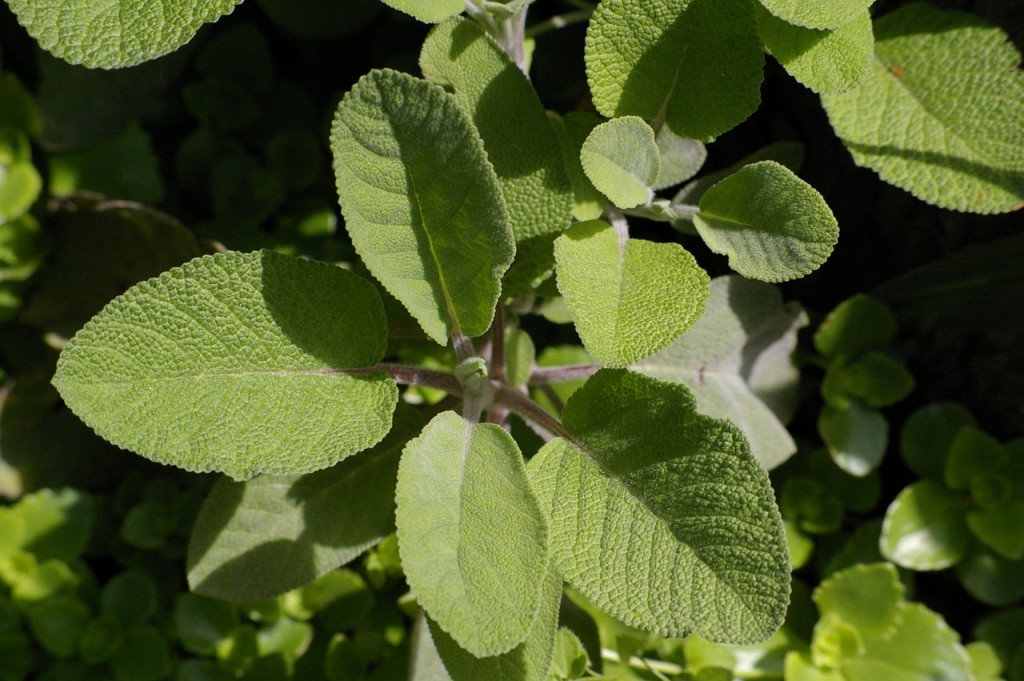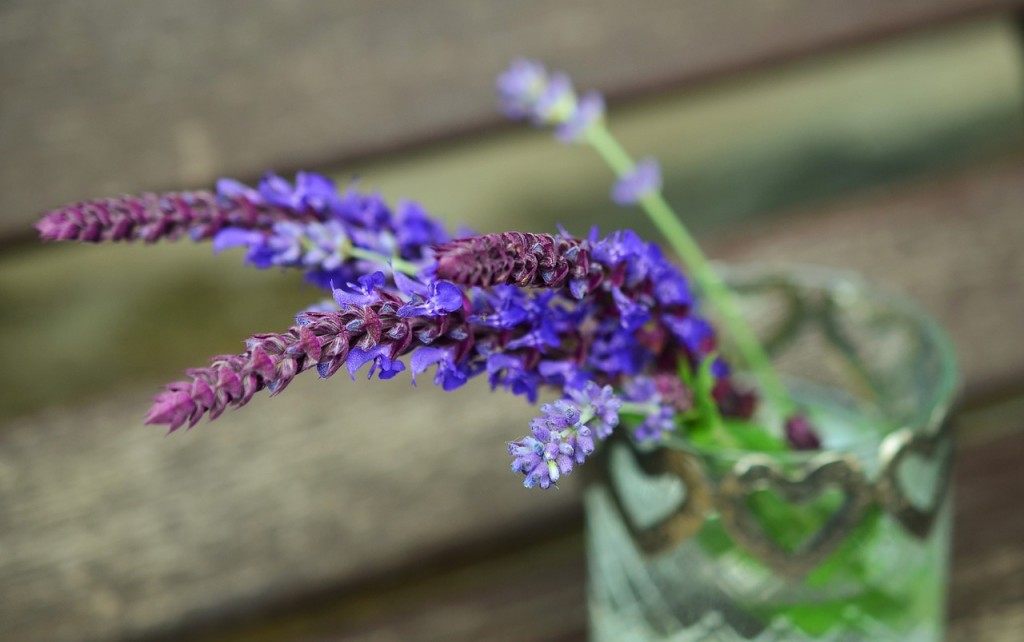
There are several popular sages, all with strongly scented leaves and pretty heads of small flowers and all are used as both decorative plants for the flower border and for culinary use.
Planted in a warm spot the volatile oils from the foliage will scent the evening air, or use to line a path where the leaves will release their fragrance as you brush by.
Varieties
Our most commonly grown species is Salvia officinalis (common sage) and hybrids of it, such as ‘Purpurascens’ (the purple-leaved sage) also ‘Tricolor’ and ‘Icterina’ (variegated) sages, pretty coloured-leaved types, as popular for their decorative leaves as their use in the kitchen.
There are lots of ‘fruit’ scented types, such as pineapple, blackcurrant, raspberry, peach and tangerine sages.
These are generally less hardy than our more familiar garden types but make lovely and useful plants for a container on a sunny patio in summer or very sheltered spot in a border
Growing tips
Sages prefer a sunny, well drained spot in which to grow. If you have heavy soil, such as a clay, dig in plenty of grit and well- rotted organic matter to improve it prior to planting.
Plants are short-lived and have a habit of becoming woody and straggly, so cutting shoots for the kitchen keeps them compact and younger for longer.
It also delays flowering – good since if they are allowed to flower the quality of the leaves tends to fall.

Clip over annually to maintain shape and vigour.
Take a few cuttings each year to replace old stock; these root easily from tip cuttings (just remove shoot tips about 5-7cm (2-3in) long and dib them in some cuttings compost in individual small pots or cell trays.
A little grit or sand added to the compost will improve the drainage and although it’s not essential, dipping the end of the cuttings in rooting hormone powder can help speed rooting which can take as little as a month in the summer.
It is also possible to grow plants of many types from seed and these should be sown in the spring.
Growing in pots
Sages grow well in pots either on their own or with other herbs.
Plant in a gritty compost and place the container near the house where the leaves and shoots will be convenient to pick.
Tender types such as the fruit sages are best grown in pots to allow them to be moved to somewhere frost free in winter.
Remove the flowers to maintain the quality of the leaves.
Fact file
A tea made from sage is said to be calming and very good for a sore throat as it has mild antiseptic properties.



